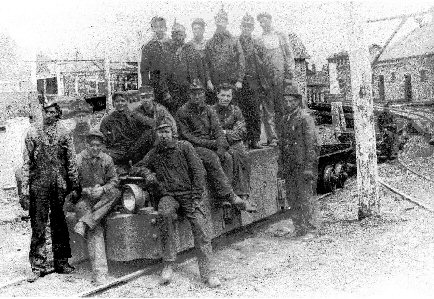
|
8. A Centennial
Note
Elderly miners and their families interviewed in the 1980s
for The Miners of Windber uniformly named the strikes of 1906 and 1922
as the two most significant events in the town's near 100 years of history.
Yet these were only two of the most dramatic collective and individual
struggles in which working people in Windber engaged over the years,
as they sought to unionize, gain greater control over their lives, and
secure American constitutional rights and civil liberties in a company
town where these elementary features of a democratic society did not
exist. Moreover, ongoing struggles for social justice did not end with
successful unionization in the 1930s, or with the subsequent closing
of the mines and deindustrialization in the 1950s and 1960s, but continue
today under new conditions.
What heritage exhibits, and what newspaper articles, accurately remember
the aspirations and longterm struggles of Windber-area miners and their
families for union? Who has remembered--or commemorated--the victims
of the massacre of 1906? On the 75th anniversary of the landmark strike
of 1922-23, who today remembers the participants, or the conditions which
led thousands of Windber-area immigrant and American miners and their
families to take part in this particular historic mass struggle? Or the
experiences of the area's thousands of working people who encountered
the harsh problems of coal-related diseases, poverty, unemployment, mine
closings, outmigration, over the years since then?

Windber
Miners at Mine 35, 1905.
Courtesy, Windber Area Museum
|
|